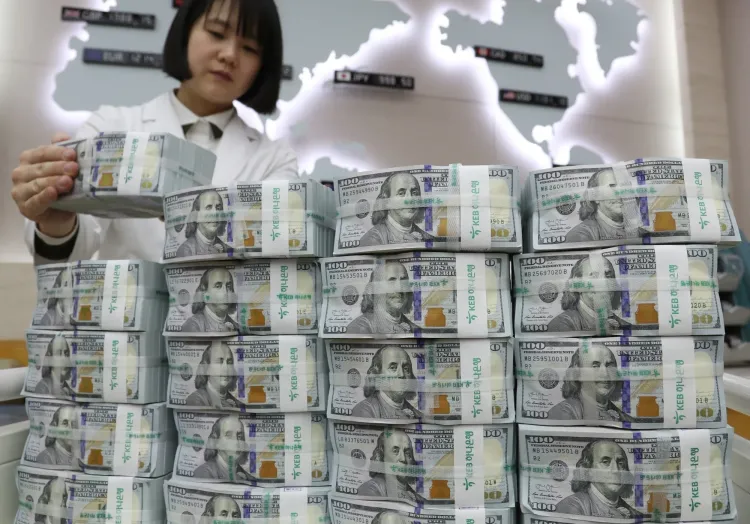Is South Korea's Money Supply Rising Amid a Strong Stock Market?

Synopsis
Key Takeaways
- South Korea's M2 increased for the sixth month in a row.
- The M2 reached 4,430.5 trillion won in September.
- Investment trust funds rose by 5.7 trillion won.
- Demand deposits increased by 9.5 trillion won.
- Discussions on AI and semiconductor strategies are underway.
Seoul, Nov 12 (NationPress) South Korea's money supply has seen a rise for the sixth consecutive month as of September, fueled by an influx of investment-related funds amidst a robust domestic stock market, as revealed by data from the central bank on Wednesday.
The M2, an essential metric of the money supply, reached 4,430.5 trillion won (approximately US$3.02 trillion) in September, marking an increase of 0.7 percent from the previous month, according to preliminary figures from the Bank of Korea (BOK), as reported by Yonhap news agency.
This figure has shown a steady rise since April and represents an 8.5 percent surge compared to the same month last year.
The M2 measure includes cash, demand deposits, and other financial instruments that can be quickly converted to cash.
In September, investment trust funds rose by 5.7 trillion won from the prior month, while demand deposits surged by 9.5 trillion won, more than doubling the 3.7 trillion-won increase recorded in August.
Additionally, installment and savings deposits with flexible withdrawal options rose by 6.8 trillion won.
A BOK official stated, "The increase is indicative of balance sheet management at the end of the quarter, along with the influx of funds seeking investment opportunities."
An official was seen inspecting 50,000 won banknotes at Hana Bank's counterfeit response center in Seoul, as seen in a file photo taken on July 17, 2024. (Yonhap)
In related news, the Ministry of Trade, Industry and Resources convened its first policy consultation meeting under President Lee Jae Myung on Wednesday, discussing South Korea's vital economic agenda, which includes the AI transformation of the manufacturing sector and enhancing trade competitiveness, with government officials and experts.
The discussions also touched on Korea's recent tariff agreement with the United States and strategies to advance the nation's semiconductor industry, according to the ministry.
The meeting was attended by 26 experts in fields such as AI, economic security, finance, trade, and resources, alongside numerous government officials.
Industry Minister Kim Jung-kwan remarked during the meeting, "As uncertainties surrounding our economy have eased somewhat with the trade deal with the U.S., we must now focus our efforts on strengthening the fundamental competitiveness of our industries."









